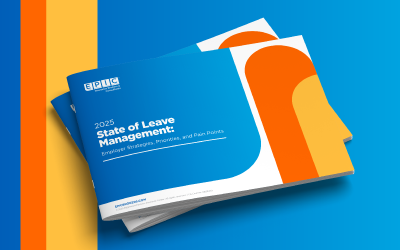As the national discussion turns to restarting the economy many employers are deep into strategic discussions on restarting their own business.
To participate in our “Return to Work” and other Market Pulse surveys, visit epicbrokers.com/insights/preparing-for-the-new-normal/
Viewpoints from Craig Hasday
The obvious first consideration is equipment such as hand sanitizers, gloves, face masks, and maybe even eye protection. Human resource departments and C-suites are facing decisions, with which they probably have little experience and even less expertise, such as what to buy and how much it should cost. There does not seem to be consistent guidance on the appropriate level of protection (are N95 masks needed or some other protection level?) and how often this personal protective equipment (PPE) needs to be changed. And yes, everyone knows that deep cleaning of frequently encountered spaces is needed, but with what cleaning product and how often? For example, should the coffee pot be sanitized after each time someone pours a cup? Probably.
Reconfiguring workspaces to accommodate social distancing is another consideration. It seems that six feet of separation should be established from the closest contact point for each workstation and there is talk of implementing one-way walk paths so employees don’t encounter one another as they pass through the office. Rotating staff seems to be a popular option so that if a staff member contracts, or is exposed to, COVID-19 renewed isolation requirements would impact only a portion of the workforce. Many employers are considering restricting visitors or creating isolation workspace for them – but are concerned about employees interacting with those guests.
Most employers plan to implement screening of employees as they enter the workspace, but what protocol should be adopted? Questionnaires about exposure to the disease for the employee, family members, and anyone with whom they are in contact will be important. Many employers will be taking temperatures since elevated body temperature is one of the common symptoms – and I read an article about blood oxygen levels being another indicator. Will employers be adding blood oximeters to their entrance process?
Testing is another area that is getting a great deal of focus. There are two types of tests: those that look for the presence of the virus and those that determine if antibodies exist which might (and I emphasize might) create immunity to contracting the disease again. But which test to use, its availability, how will it be administered, and at what frequency is another puzzle to solve. The Food and Drug Administration (FDA) has yet to determine whether the presence of the COVID-19 antibody does create immunity, and to the best of my knowledge, none of these tests have been approved. There is at least one at-home version of a COVID-19 test but availability is limited. And tests for the presence of the virus take anywhere from 15 minutes to several days to produce results. So, should an employer require current test results from employees re-entering the workspace? And even if the employer does test what about erroneous results? I am not certain what’s worse – a false positive or a false negative? Obviously, the false-negative would be conceivably disastrous in terms of potential spread.
There is a lot to consider as employers plan for the “new normal” (participate in and look out for our Market Pulse survey results). FDA and Occupational Safety and Health Administration (OSHA) guidelines exist, but these are changing daily. I am anxiously awaiting the vaccine so we can truly get back to the old normal, but life as we knew it may never return.
For more of our coronavirus coverage, visit epicbrokers.com/coronavirus
Related Content
Products
Employee Benefits Consulting
Our dedicated benefits team is focused on delivering better outcomes – to both your benefits program and ...
Industries
Healthcare
Our healthcare practice is known around the world for its expertise and passion in delivering exceptional ...
Products
Compliance
We provide comprehensive consulting services and in-depth education regarding the ever-changing employee ...



